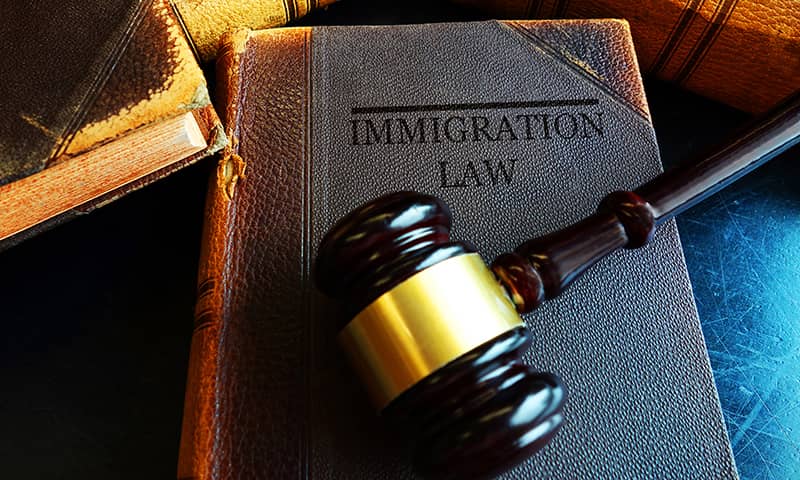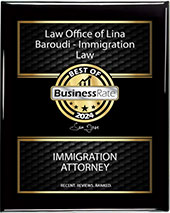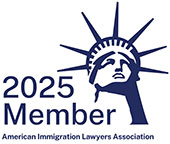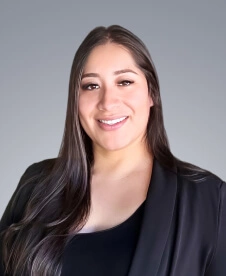If you’ve been granted asylum or refugee status in the United States, you likely want your close family to join you here.
Form I-730, Refugee/Asylee Relative Petition, allows eligible asylees and refugees to petition for qualified family members, like a spouse or unmarried children under 21, to reunite with them through the immigration process.
In this guide, our asylum lawyers will walk through everything you need to know about the I730 petition – who’s eligible, how to file, timelines, and even what to do if your case faces challenges. We’ll provide tips so you can feel fully prepared at every step.
What is Form I-730 and How Does it Work?
Form I-730 allows approved refugees and asylees to initiate the process for eligible family members in the U.S. or abroad to immigrate to the United States.
This is known as “following-to-join” and gives relatives a way to obtain similar status and join their family. To be eligible to file the I-730 petition, you must have already been granted refugee admission or asylum in the U.S.
Congress created the I-730 program to uphold the importance of family unity for those granted refuge or asylum. It’s an invaluable legal avenue to bring your immediate family together and restart your lives in safety and freedom.
Who Qualifies for the Refugee/Asylee Relative Petition?
To file an I-730, you must first have been admitted to the U.S. as a refugee or been granted asylum.
You are then eligible to petition for qualified family members, including:
- Your spouse – Your current spouse, provided you were married before being granted asylee or admitted to the U.S. as a refugee
- Your unmarried children under 21 – Your kids who are not yet 21 and who are unmarried. This includes your biological or legally adopted children.
- Step-children – Your spouse’s children who are unmarried and under 21.
Your child must have been under 21 on the date you were first admitted as a refugee or granted asylum. There are some exceptions under the Child Status Protection Act to allow for processing delays.
Adopted children qualify as long as the adoption took place before the child turned 16 and they’ve lived with you for at least two years.
Filing the I-730 Petition
You can download Form I-730 along with instructions as a fillable PDF from the USCIS website. Make sure to take your time and complete all sections thoroughly and accurately.
Required documents include:
- A copy of your I-94 or proof of asylum status
- Birth certificates, marriage certificates, or adoption decrees
- Passport photos of each beneficiary
There is no fee associated with filing Form I-730. You must file the petition within two years of being admitted to the U.S. as a refugee or of being granted asylum. Mail the completed forms and supporting documents to the appropriate service center.
How to Complete the Petition — Step-by-step
Here are step-by-step instructions for completing your I-730 petition. There are eight parts that must be completed.
Start Here
To initiate the process, start with the initial step labeled “START HERE.” You will need to specify your status as one of the following:
- Refugee
- Asylee
- Lawful permanent resident (LPR) based on prior refugee status
- LPR based on previous asylee status
Additionally, you must identify the beneficiary and the number of eligible relatives you are filing for.
Part 1: Petitioner Details
Within this section, provide information about yourself as the petitioner. Include details such as:
- Last, first, and middle names
- Residential and mailing addresses
- Telephone number
- Email address
- Gender
- Date of birth
- Country of birth
- Nationality
- U.S. Alien Registration Number (A-Number)
- U.S. social security number (if applicable)
- Marriage information
- Asylee or refugee status details
Part 2: Beneficiary Information
In this section, replicate much of the information from Part 1, but this time pertaining to the beneficiary of Form I-730. You must also specify whether the beneficiary is currently residing inside or outside the U.S. and respond to additional immigration-related queries.
Should you find any aspect of this section confusing, consider consulting your immigration attorney for clarification.
Part 3: 2-Year Filing Deadline
Complete this part if you’ve exceeded the two-year filing deadline. Here, provide an explanation for your delay in applying within the stipulated time and furnish supporting evidence.
Part 4: Caution
USCIS includes a cautionary segment about removal proceedings. Consult your immigration attorney to determine the beneficiary’s status and whether they are at risk of being placed in removal proceedings.
Part 5: Petitioner’s Signature
Make sure to affix your signature, print your name, and date this section.
Part 6: Beneficiary’s Signature
The beneficiary should sign, print their name, and date this section only if they are currently in the United States.
Part 7: Interpreter’s Contact Information
If you use the assistance of an interpreter, include their contact information in this section.
Part 8: Preparer’s Signature
In case someone other than the beneficiary or petitioner assisted in preparing your Form I-730, ensure that they also sign the form.
Part 9: To Be Completed at Beneficiary’s Interview, If Applicable
Leave this section blank; it will be filled out during the beneficiary’s interview. It’s possible that you, as the petitioner, may also be asked to participate in an interview.
What Happens After Filing the I-730 Petition?
Once you mail the I-730 package, you’ll receive notices as your case progresses. Processing times can vary from a few months to over a year.
Check status updates online or by calling USCIS. Your family abroad will be contacted for interviews by the State Department or USCIS field office where they reside. Approvals are sent to the National Visa Center, which coordinates travel arrangements.
Once approved, your family members can proceed with the process to ultimately immigrate to the U.S.
The next steps often include:
- An immigrant visa interview at the consulate if they are overseas.
- Receiving travel documents to enter the U.S.
- Adjusting status to permanent residence once they arrive in the U.S.
Stay the course and keep working with your attorney after approval to successfully bring your family here.
Why Work With an Immigration Attorney?
The I-730 reunites families torn apart by conflict, but it also involves complex immigration laws and procedures. Having skilled legal guidance maximizes your chances of success and avoids unwitting mistakes.
Our experienced family immigration lawyers can:
- Determine if your family qualifies before filing. They’ll review eligibility issues to save you time and fees on ineligible petitions.
- Ensure forms are error-free and documents are properly prepared. Incorrect or incomplete I-730 packages often face denials and delays.
- Strategize options if your case faces setbacks like an RFE or denial. For example, filing appeals or reconsideration requests.
- Adjust strategies based on changing immigration policies and precedents. Laws and guidelines evolve, and lawyers stay up-to-date.
- Expedite urgent cases involving health problems, safety risks, or family separation hardships. Lawyers know the proper channels for faster processing.
- Represent your interests if interviews raise questions or concerns. They can clarify confusion and advocate on your behalf.
- Guide next steps after approval, from travel logistics to adjusting status. Complexities continue even after the I-730 green light.
Don’t navigate the process alone. The Law Office of Lina Baroudi in San Jose can provide guidance each step of the way, relieving stress so you can focus on the joy of reuniting with loved ones. Contact us today for a consultation.





















